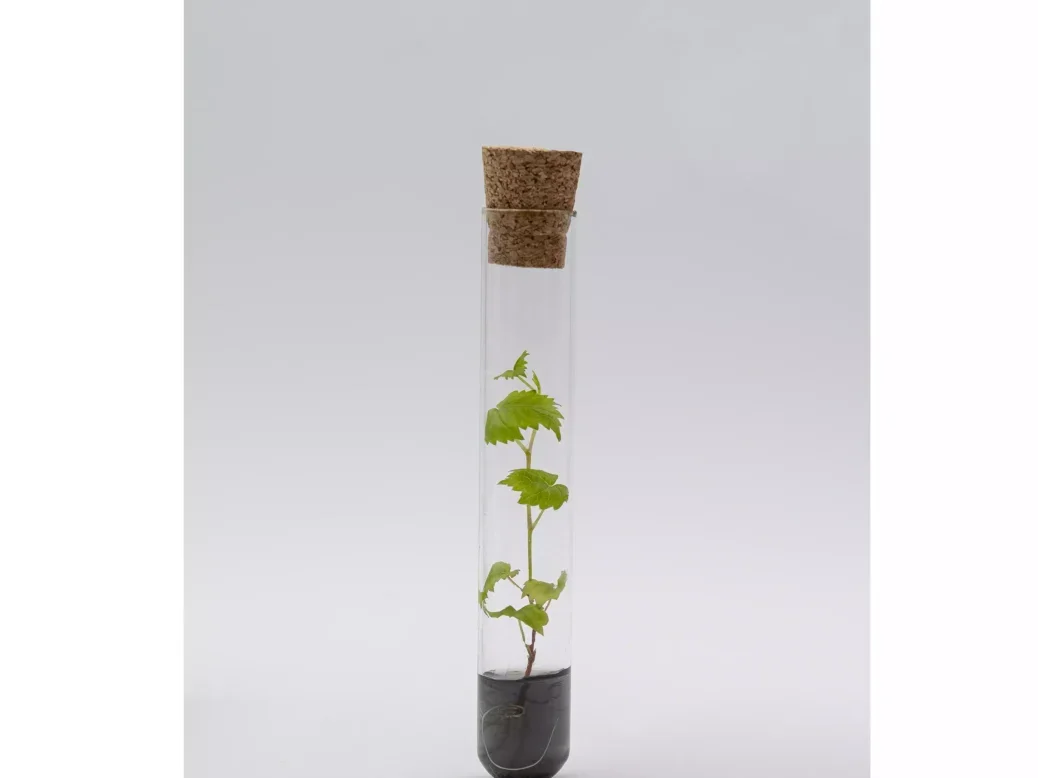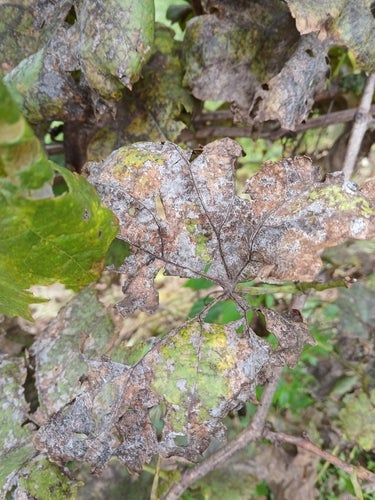
Aki Kaji explores the rapid advances made in the field of genetic engineering and asks when—and why—we might get to see gene-edited Chardonnay and other varieties in some of the world’s most celebrated vineyards.
What is genetic engineering… as distinct from genetic modification? It is rare for most people to reflect on either at any length. There are, however, many developments under the surface, even if they have not yet had much impact on people’s daily lives. But they will. And in the wine world, genetically engineered vines have already been created. So, might we see Montrachet made with gene-edited Chardonnay? And if so, when? And why?
The dominant motivation for genetic exploration is to cope with possible food crises caused by climate change and population explosion. As is evident from the lack of public awareness, however, the research is led by governments and scientific institutions, and the public is not yet very involved in its direction and regulation. Even if you have heard of genetically modified organisms (GMOs), you may not have heard of gene-edited crops.
According to the European Food Information Council, genetic modification is typically the transfer of a gene from one species to another, while gene editing is typically the use of very precise genetic engineering techniques to alter genes between the same species. In general, GMO cannot happen in nature, but gene editing can. Although the legislation is still being formulated, some gene-edited crops are being treated as equivalent to those produced by conventional breeding and improvement techniques. There is therefore no obligation to label them as GMO, and they can be freely marketed. Some may be shocked to learn that we are already at that stage. But it is important to know. And you can then develop your own response.
Here I first explain what a gene is and give a brief overview of genetic-engineering history. I then discuss the differences between different genetic techniques and the characteristics of the vines produced from each of them. Some may be surprised, one way or another, by recent developments in genetic engineering. Perhaps some of those who are anxious about it, or strongly opposed to it, may change their boundaries and accept it more or less fully in some circumstances. Even those who are broadly in favor of genetic engineering may draw their own boundaries regarding desirable or safe limits. I then go on to explore the impact of genetic engineering on the wine world.
I consider the subject from a mostly European perspective. But as one researcher has advised, it is necessary to have perspectives from different countries, since they can all influence each other. Future competition for markets, or the success of one country in genetic engineering, or the need for genetic engineering in world affairs, could change the course of events significantly. Genetic engineering may be a bit like Bacchus—a bringer of joy and a destroyer of lives. We need to try to control it.
What are genes?
The bodies of plants and other life forms are composed of cells. The adult human body comprises some 37 trillion cells, all of which are the result of division from a single fertilized egg. Cell division follows a blueprint, and that blueprint is the genes in the nucleus of the cell. According to the genes, appropriate proteins are produced, and organs such as the heart are created. Traits are determined at the genetic level. A certain race is less tolerant of alcohol, for example; only women can bear a child. But if genes can be changed, it is possible to give an organism desired traits. The most recent development in this field is gene editing, which is already being practiced on vines.
Genes, like computers, are digitally designed. Computers use the symbols 0 and 1, which cannot be broken. But genetic data or genome information comprises four substances, which can be broken physically or chemically. A book may afford a helpful analogy. It transmits information by means of paper and ink. So, if it is burned or torn, the information may become unreadable. The same is true for human genes. For example, exposure to radiation or ultraviolet rays may damage genes, making them unreadable. Fortunately, living organisms have mechanisms to repair damaged genes, because such damage occurs routinely. On rare occasions, a failure to repair (mutation) may even result in advantages for an organism. Mutation is, in fact, essential to adapt to various environmental changes on Earth. More often than not, however, life is threatened by altered genetic information—as in the case of cancer—so genes attempt to repair themselves.
Genetic engineering
Crop breeding and improvement is achieved by creating desirable genetic change or mutation. Simple gene change has been practiced since time immemorial. Hybridization (crossbreeding) is one such method, in which different species or varieties are crossed to obtain seeds. The seeds are sown, and among the crops, humans select those with beneficial traits. Disease-resistant PiWi grape varieties have been increasingly discussed in recent years, and they are also the result of artificial hybridization. Other methods involve chemicals or radiation. Irradiation damages genes and mutation can occur. Gold 20th Century is a famous rice variety from Tottori, Japan, in which a mutation has been induced by gamma rays. Such genetic change requires, however, an enormous amount of effort and time. Tens of thousands of seeds must be sown, grown, observed, and selected for desirable traits. It takes decades for a new crop to become commercially viable. Valentin Blattner is a renowned Swiss vine breeder. He sows some 40,000 seeds a year to obtain only two or three commercial products. The white grape variety Pamina was hybridized at the University of Geisenheim in Germany in 1986 but not registered as an official German variety until 2021. And it is still in the final stages of commercialization.
/
If the sequence of genes and the function of each gene could be known and changed, it would be possible to create new crops without expending nearly so much effort and time. In medicine, it would be possible to cure intractable diseases, such as cancer. In the pursuit of this idea, the world’s first genetically modified organism was created in the US in 1973. And in 1990, the Human Genome Project was launched there. It took 13 years to complete the analysis of the human genome. The sequence of genes was revealed, spurring the elucidation of the function of each gene. Despite that success, the analysis took an enormous amount of time, and the associated costs were huge. So, it seemed a pipe dream to analyze the genomes of other living organisms and to use them commercially.
The breakthrough was made in 2005, when the next-generation sequencer was released by 454 Life Sciences Inc. The sequencer can complete the analysis of the human genome in a few days. And it costs less than $1,000. This has made it possible to analyze genes at the individual level. In the case of crops, it is now possible to know whether a variety has desirable genes or not after crossbreeding or hybridization. The selection process, which would otherwise have taken a few decades, has been greatly shortened.
Furthermore, in 2012, a technology called CRISPR-Cas9 gene editing was developed. CRISPR enables pinpoint gene editing based on genome information. The CRISPR technique has advantages over previous techniques in that it is inexpensive and easy to use. The developers, Emmanuelle Charpentier and Jennifer Doudna, were awarded the Nobel Prize for Chemistry in 2020. In 2021, the world’s first CRISPR gene-edited crop was commercialized in Japan—a tomato developed by Sanatech-Seed, a company originating from the University of Tsukuba. Interested consumers can buy the tomatoes online. And a number of gene-edited grape varieties have already been created using CRISPR technology.
Legal, ethical, environmental, and health issues
Gene change for breeding and improvement has become technically feasible, but it raises a wide range of legal, ethical, environmental, and health issues. To reduce the ecological impact of genetically modified organisms, the Cartagena Act came into force internationally as early as 2003, and some 200 countries have now signed up to it. But there are also bioethical questions regarding genetic engineering, as well as concerns about the safety of gene-altered foods. Resistance is so great that there is a worldwide boycott of these products, strongly supported by environmental group Greenpeace, for example.1
On the other hand, improvements in genetic engineering, such as the advent of CRISPR, have brought a range of genetic technologies. Some may well achieve social acceptance, which would in turn have a major impact on agriculture. As mentioned above, radiation-induced mutation uses the natural mechanism of gene repair—a technique already accepted by many people. One of the CRISPR editing techniques can be said to be an update of the radiation technique. Based on genome information, CRISPR can precisely target a gene to cut it out, and it is then repaired naturally. By repeating this process, an error occurs and a change in the gene sequence is induced. This technique is called targeted mutagenesis. It is the ultimate shortening of natural mutation that may well be accepted by society soon. Sanatech-Seed used targeted mutagenesis for its edited tomatoes, which have already been approved by Japanese ministries for commercialization.2 There appears to be no real opposition from consumers so far, though the Japan Organic Agriculture Research Association and others have expressed opposition.3
Knock-down and knock-out
Gene-editing technologies vary widely. In mutagenesis, there are technologies called knock-down and knock-out. In both, a gene is cut out using a gene-editing tool such as CRISPR, and a mutation is introduced as part of the natural repair process. When the function of the gene is lost, it is knock-down, and when the gene is connected at both ends with the gene cut out, it is knock-out.
For grapevines, Vivai Cooperativi Rauscedo (VCR) in Friuli, Italy, collaborates with the Institute of Applied Genomics (IGA) of Udine, which uses knock-down to create edited grape varieties resistant to powdery mildew. Dr Elisa De Luca is the VCR director involved in this project, which she kindly explained to me. Powdery mildew is one of the most damaging vine diseases. When the pathogen adheres to a vine, the plant reacts and produces certain chemicals. The pathogen takes advantage of the vine’s response by detecting the chemicals and recognizing the vine to attack further. By knocking-down the gene responsible for the chemical production, the vine can avoid the pathogen attack. Vines resistant to powdery mildew can avoid damaging losses in quality and yield, and therefore loss of income for the grower. It also reduces the chemical spraying required to control the disease, which lowers production costs, as well as reducing environmental impact and health risks to neighboring residents. In 2023, Bordeaux experienced unprecedented powdery mildew damage due to the wet growing season. According to the Chamber of Agriculture of the Gironde, 92% of monitored vineyards were infected, and more than 55% of grapes lost their commercial value due to powdery mildew. Similar damage was observed throughout the region.4 At Domaine Ducourt in the Entre-Deux-Mers, to take only one example, a total of 18 chemical sprays were applied to organically grown vineyards in 2023, while in dry and warm years, only ten chemical sprays are needed.

As for the food safety of gene-edited varieties, it should not provoke a problem, at least in theory. The edited vines in Dr De Luca’s collaboration project are only non-functional in the relevant genes, so their other traits are no different from those of the original vines. That said, it is still necessary to grow them for at least ten years to monitor their food safety, quality, and response to diseases. And there is already a concern. This knock-down variety is only hiding from powdery mildew. Whether or not it will be found, sooner or later, remains to be seen.
Knock-in
The disadvantage of mutagenesis (knock-down and knock-out) is that it is inefficient (even if it is still dramatically quicker compared to conventional breeding methods). If one inserts the desired gene directly, it is possible to create the desired variety far more rapidly. This method is called gene knock-in.
Powdery and downy mildews are fungal diseases originating from the Americas. Indigenous American vine species have the resistance genes. On the other hand, Vitis vinifera, the main species used in wine production today, does not have any of these resistance genes. Knocking the resistance genes of American vines into Vitis vinifera would provide comparable disease resistance.
Four genes (Rpv3.1, Rpv3.2, Rpv10, and Rpv12) have already been identified for resistance to downy mildew, and three others (Run1, Ren3, and Ren9) for resistance to powdery mildew. These genes cause a hypersensitive response in grapevines when they detect the pathogen and resist it. The more resistance genes there are, the stronger the resistance.
The knock-in technique is similar to the knock-out in practice: A gene-editing tool such as CRISPR is used to cut out the relevant gene in vinifera, and the resistance gene is added along with it. Though not related to vines, a video of gene editing is available on YouTube (below) for readers who want to see how CRISPR editing works.5
The advantage of knock-in is that vines can directly combat the diseases through resistance genes. It is very effective and seems more reliable than indirect methods, such as that in Dr De Luca’s project. A knock-in grape variety has already been created at the CREA-VE Research Institute in Veneto, Italy. The institute is part of the Italian Ministry of Agriculture, and the relevant team is led by Dr Luca Nerva. CREA-VE is working on knocked-in varieties with the downy mildew resistance gene, Rpv3. Their disease resistance is very high.
Hybrid PiWi varieties have disease-resistance genes. Let’s look at the impact of the knock-in variety. Domaine Ducourt, mentioned above, grows Sauvignac, a high-quality PiWi variety that produces a crisp white wine similar to Sauvignon Blanc. Sauvignac has two genes for resistance to powdery mildew (Ren3+Ren9) and two for resistance to downy mildew (Rpv3+Rpv12). In 2023, a total of 18 chemical applications were required for the vinifera varieties grown organically, while only two applications were required for the PiWi variety. So, the impact is obvious.
Moreover, at least in theory, knock-in editing should be able to address not only fungal diseases but also grapevine trunk diseases—which are currently the most damaging grapevine diseases in the world—and viral diseases.6 Not only that, but its ability to help with drought, phylloxera, and other pests could be immeasurable. Additionally, by knocking-in conventional vinifera varieties, it should be possible to develop varieties that are resistant to all risks while maintaining all their sensory qualities. Mercier nursery is the biggest vine nursery in France that develops both mutagenesis and knock-in varieties. The chief researcher there, Dr Olivier Zekri, is working on Merlot and other varieties that are tolerant not only of fungal diseases but also of drought and extreme heat, which are ever-growing threats in our climate-change times.
The possibilities for knock-in technology seem endless. But this is certainly a more radical technique compared to knock-down. Concerns about such technologies are high, arousing strong consumer opposition. On the other hand, climate change, combined with global population growth and the risk of food and water shortages, are engendering a sense of crisis all around the world. Solutions of one kind or another are required.
The EU boundary
Europe accounts for half of the world’s wine production and leads the global wine industry. There is debate in the EU over the extent to which genetic engineering should be explored, and where to draw the line.
The European Parliament publishes guideline papers on new genomic technologies for agriculture. On the basis of these, the EU appears to exempt mutagenesis and some knock-in techniques from being classed as genetic modification, instead placing them on the same footing as traditional breeding and improvement techniques. According to the 2024 document compiled by Ms Ivana Katsarova of the European Parliament (European Parliament, 2024), genetic editing that occurs in nature and in less than 20 genes is not considered to be genetic modification.7 In particular, if a resistance gene from an American vine species is inserted into a vinifera vine, it is not considered a GMO because that can happen in nature. This vine is called a gene-edited variety and does not have to be labeled as GMO when it is commercialized. But to complicate matters, gene-edited varieties are considered as GMO in organic agriculture and are thus prohibited under organic farming.
This complex regulation is a result of the need to balance concerns about genetic engineering with the necessity of averting a possible agricultural crisis. Opinions on genetic engineering vary widely, of course: Some people want to advance the technology, while others want to halt it immediately. At Mercier, Zekri believes that grape growers and wine producers face an existential threat due to climate change and the risk from various diseases, and that genetic engineering should be an alternative tool in their toolbox. At VCR, De Luca is also in favor of gene editing and believes that development of the knock-in technique between the same and closely related species will be beneficial to human society. I must confess to having my own anxieties about genetic engineering, but I can see that it might be reasonable to explore knock-in gene editing between the same and closely related species, as proposed by the EU.
Where do other wine consumers stand on these issues? I conducted a questionnaire with 46 participants of the PiWi seminar I organized at the Caplan Academy in Tokyo in August 2023. They were mostly non-professional wine lovers but also included a few wine professionals. The questionnaire asked whether they would choose PiWi varieties or genetically edited varieties as sustainable grape varieties in the future, after attending the 90-minute seminar and a tasting of five PiWi wines. Nearly half (20) of the respondents replied that the distinction between PiWi and edited varieties did not matter to them, which indicates that resistance to genetic engineering may be decreasing. But the second-highest number of respondents (15), chose PiWi, which suggests that a significant number of people are unfavorable to genetic engineering. The seminar did not address, however, differences within gene-editing technologies. Even those who countenance gene editing differ as to whether they accept knock-out editing, knock-in editing between the same species, or free knock-in editing (GMO).
For consumers to be able to choose food or wine products based on their own opinion, they need accurate and current information to form their view. To this end, it would surely be better to legislate gene editing on its own, rather than regarding it as equivalent to conventional plant breeding and improvement techniques. There seem to be political considerations at play. For example, the EU has set a target of zero environmental impact by 2050 as part of its policy known as the Green Deal. One aim is to reduce the use of synthetic pesticides to zero on all agricultural land in the EU. Another is to reduce the carbon dioxide emissions from the production of chemical fertilizers to zero. These would cut chemical pollution for those living near farmland, as well as reducing the risks posed by climate change. In agriculture, the basis for achieving these goals is gene-editing technology, behind which there would need to be a broad consensus in favor. If all gene-edited crops needed to be labeled as GMO, the Green Deal policy might well not be realized due to the backlash among consumers.
The reason for treating certain gene-editing techniques as conventional breeding, and for not imposing a labeling requirement, may be to avoid consumer resistance as discreetly as possible. There is no labeling requirement for gene-edited crops in Japan because these products are treated the same as conventional plants. Sanatech-Seed and other companies have voluntarily labeled their products as gene-edited. It is likely that the EU will choose a similar framework to that of Japan. That said, it is also conceivable that gene-edited crops would not be labeled as such, but an interface such as a QR code might be introduced to enable consumers to trace their origins if they wished. This may turn into a tug of war between governments and the public.
How will gene-edited varieties affect wine?
In theory, gene-edited Chardonnay could produce Montrachet (and other Burgundy grands and premiers crus) with much less chemical input and labor, without the need for rootstocks and without the risk of vine-trunk diseases. Surely vine growers and wine lovers would welcome the new techniques? In reality, it seems unlikely to happen, at least not any time soon. The impact that new genetic techniques will have on the wine industry will depend largely on the rules adopted. In the case of the EU, certain gene-editing techniques will likely be regarded as conventional breeding. This would mean that growers would be able to cultivate the gene-edited vines freely. Winemakers would be able to make wine from them and sell it. The crucial point here is the legal treatment of the gene-edited vines in wine law.
Wine is a unique beverage where great importance is attached to its geographical provenance. Appellation systems clearly play a big role, but so, too, do grape varieties, by providing consumers with certain styles of wine. If a newly created gene-edited variety is considered in wine law as a clone of the original variety, it may be able to produce appellation wines, as well as varietal wines. In this case, the commercial value of the gene-edited variety would increase and the impact on the wine industry would be maximized. For example, the gene-edited Chardonnay developed by CREA-VE would be regarded as a clone of conventional Chardonnay. The edited Chardonnay could be used to create, for example, any of the grand or premier cru white Burgundies. And as long as there were no legal obligation to label the wines as having been made with a gene-edited variety, there would likely be little or no consumer backlash. The distribution of the vines would be the same as for conventional clones. So, they would not suffer any disadvantages anywhere along the supply chain.
There is a big caveat, however. Under current EU policy, the gene-edited varieties could not be used in organic farming. And many or most leading producers in Burgundy, as well as in many other parts of the world, practice organic viticulture. Conventional farmers, therefore, would stand to see the greatest benefit. Regions that produce large quantities of inexpensive wine using conventional farming methods, such as the Pays d’Oc or the Veneto, might benefit most. But even premium wine-producing regions, such as Bordeaux, Champagne, and Rías Baixas, where the humid climate and labor shortages hamper the adoption of organic farming, might accept gene-edited vines to reduce labor requirements and secure yield.

On the other hand, if a gene-edited variety had to be registered as a distinct new variety, it could not be used under the current appellation legislation. Even if it were made as a varietal wine, it would have no name recognition or value so would struggle to sell. And again, it could not be used in organic farming. The commercial value of the product would therefore be greatly reduced, and the impact on the wine industry would be minimized. For example, if a gene-edited Chardonnay developed by CREA-VE were registered as a new variety under the name “CREA-White,” it could not be used for Burgundy wine. Nor would “CREA-White” varietal wine appeal to consumers. Geographical designations and varietal names are important attributes, and wines without them would be at the bottom of the price range. In this situation, the PiWi varieties would probably win out as the main sustainable alternatives.
There are additional barriers to the widespread use of gene-edited varieties in the EU. For example, even if the edited variety were considered as a clone of the original variety, it would be far from certain that each appellation—Champagne, Montrachet, Pauillac, and all the rest—would accept the use of the edited variety.
Moreover, the clones created by new genomic technologies could not obtain a patent in the EU. This means that even if Mercier and other developers produce edited vines, they may not be able to recover their development costs, which would lead to a stagnation in research. Considering all of the above, it may be difficult for gene-edited varieties to play a leading role in the EU.
I asked Dr Zekri of the Mercier nursery for his opinion on these issues. He replied that research into gene-edited crops is proceeding not only in the EU but also in other countries around the world. But he recognized that the actual use of gene-edited crops on any scale will depend on how far and how fast a sense of crisis may grow over the environment and food supplies. The sense of urgency may reach a stage where gene-edited crops would generally be regarded as desirable or necessary.
The commercial potential of gene-edited crops will also vary from country to country. For example, it is not possible in the EU to obtain a patent for a gene-edited clone of Merlot, but it is possible in the US. This means that Mercier may be able to patent a Merlot-Mercier clone in the US and sell it there. That would give a huge incentive to other developers, and competition could become fierce, leading to better edited clones.
Some countries might authorize gene-edited Merlot for appellation wines. If gene-edited varieties spread outside the EU, and other markets were dominated by them, the EU would be under great pressure to change its current policy. Moreover, if a country such as the US used gene-edited varieties to achieve unprecedented sustainability, then the EU’s organic farming sector would almost certainly be criticized for continuing its resistance to them. I suspect that this situation is very likely to arise—and sooner than many people would imagine. Gene-edited varieties may not become popular in an EU-driven wine industry over the short to medium term, but over the longer term they are likely to be accepted and adopted by more and more people, consumers and producers alike.
Under the broad scenario I have sketched out here, it makes sense for large nurseries or research institutes to participate in the development of gene-edited vines. Growers can concentrate on growing classic and PiWi varieties for the time being. Distributors and consumers—in fact, everybody involved in whatever way with the world of wine—should attempt to stay well-informed and develop their own ideas and philosophies. The big wave is yet to come. But it will.
NOTES
1. Greenpeace 2024, “GMOs & Toxic Pesticides” Available at greenpeace.org/usa/sustainable-agriculture issues/gmos –
accessed January 14, 2024.
2. Sanatech-seed 2023, ゲノム編集技術により開発したGABA含有量を高めたトマトの2例目の届出提出について Available at sanatech-seed.com/ja/230731 – accessed January 14, 2024.
3. 有機農業ニュースクリップ, 2021, ゲノム編集トマトの受理撤回を求める意見書を提出 日本有機農業研究会など Available at organic-newsclip.info/log/2021/21021105-1.html – accessed January 14, 2024.
4. Wein.plus 2023, “Bordeaux Threatened with Mildew Disaster of ‘Unparalleled Proportions.’” Available at magazin.wein.plus/news/bordeaux-droht-mehltau-katastrophe-unvergleichlichen-ausmasses-55-prozent-der-trauben-beefallen – accessed January 14, 2024.
5. News Picks 2020【実験】「神のハサミ」クリスパーCas9は、あなたでも使えるのか?
Available at youtube.com/watch?v=Yilbh1qxbsw – accessed February 3, 2024.
6. OIV 2016, “Grapevine Trunk Diseases: A Review.” Available at oiv.int/public/medias/4650/trunk-diseases-oiv-2016.pdf – accessed February 4, 2024.
7. The European Parliament 2024, “Plants Produced Using New Genomic Techniques.” Available at europarl.europa.eu/RegData/etudes/BRIE/2023/754549/EPRS_BRI(2023)754549_EN.pdf – accessed February 5, 2024.






